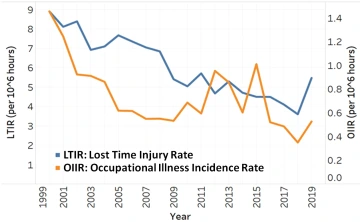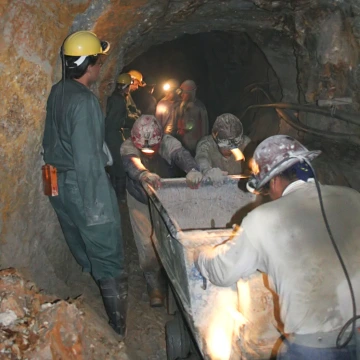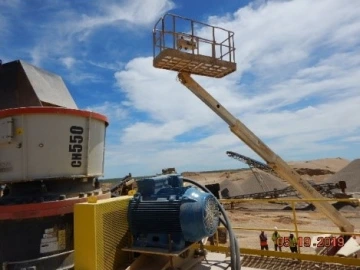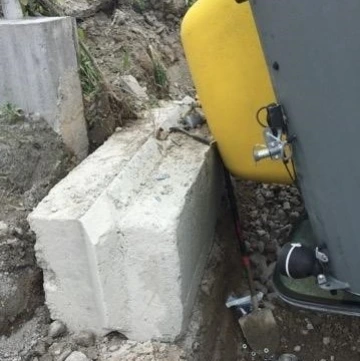While occupational health focuses on preventing hazards that cause health problems such as illness, disease, disorders and syndromes, occupational safety considers the prevention of hazards that cause injury.
Safety is often measured in part by unwanted outcomes, such as injuries and fatalities. For example, of all injuries reported to MSHA at western mines from 2000-2018, the most commonly reported accident types were "Struck by" (27.6%), "Over-exertion" (23.8%), "Falls" (14.5%), "Caught in, under, or between" (12.5%), and "Struck against" (12.1%).

This primer provides an overview of several key categories of injuries, as outlined below. For further study, MSHA's Open Government Data Sets provide useful resources on current and historic injury trends.
Struck by or Against
"Struck by" injuries occur when a worker is stuck by a falling, rolling, swinging or flying object. These types of injuries most commonly result in fractures, sprains or strains of the back, neck and knee, and are usually caused during powered haulage or machine maintenance. Roof bolters, maintenance personnel, and laborers experience struck by or against injuries most frequently.

Over-exertion
Musculoskeletal disorders (MSDs) often result from poor ergonomics and over-exertion injuries. According the MSHA’s publicly-available data, over-exertion injuries result in more days lost than almost any other injury category. Most lost time over-exertion injuries result from the handling of supplies or materials, walking, running, and machine maintenance. Sprains or strains of the lower back, shoulders and knee are the most common types of over-exertion injuries.

Slips, Trips, and Falls
Falls from the same or higher level are a serious safety problem. According to MSHA’s data, falls account for approximately 30% of all accidents in the mining industry, and falls to the same level result in more lost time accidents than any other injury category. These injuries occur most frequently while workers are walking, running, and getting on or off of equipment, and often result in sprains, strains or fractures of the back, shoulders and knee.

Caught in, Under, or Between
A "caught in" injury is one in which a worker is crushed between two objects, often materials or machinery. According to MSHA’s data, activities including machine maintenance and handling of supplies or materials result in most caught in, under, or between injuries. These injuries most frequently result in the fractures of the fingers, feet and hands, and tend to most often affect maintenance personnel, roof bolters and laborers.


